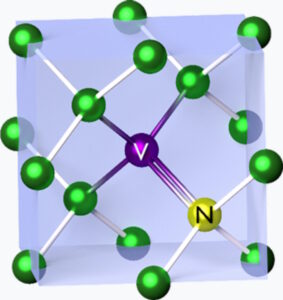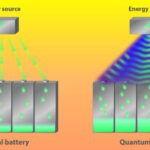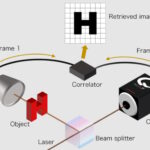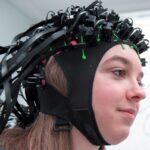Quantum sensors rely on quantum mechanical principles like entanglement, interference (also called superposition), discrete quantum states, and coherence. They are unlike quantum computers, which need highly stable environments for operation. Some quantum sensors can operate at room temperature. As a result, quantum computers are still a work in progress, while quantum sensors are used today.
This FAQ begins with a brief comparison of quantum and classical sensing and then digs into a few quantum mechanical technologies used in sensors, including entanglement, nitrogen-vacancy (NV) centers, Rydberg atoms, and squeezed light and quantum uncertainty.
Quantum sensors provide precise measurements of minute changes in a range of physical quantities like magnetic and electric fields, time, temperature, pressure, and chemicals, and more quantum sensors are emerging on a regular basis.
Examples of existing quantum sensor protocols and their classical sensor analogs include (Figure 1):
- Electron−nuclear hyperfine interactions based on pulsed Electron-Nuclear DOuble Resonance (ENDOR) spectroscopy and electron spin coherence versus continuous wave ENDOR using microwave energy. Pulsed ENDOR spectroscopy is often used with NV detectors.
- Electric field detection using Rydberg atoms and their coherent coupled states versus vibrational stark spectroscopy (also called electro-absorption/emission spectroscopy).
- Space-time distortions can be measured using squeezed light and quantum uncertainty principles versus laser interferometry.

Entanglement
Quantum entanglement links atoms or atomic particles so they can instantaneously influence each other regardless of their physical separation. Using entangled atoms in sensors can significantly reduce the background noise and support higher sensitivities. In one experiment, networked atomic clocks and quantum accelerometers were fabricated using entangled atoms. Compared with similar devices built using classical physics, the quantum devices provided time measurements that were 3.5x more precise and acceleration measurements that were 1.2x more precise.
Nitrogen vacancy center
A nitrogen-vacancy center (NV center) occurs when two carbon atoms in a diamond lattice are replaced by a single nitrogen atom and an adjacent empty space (Figure 2). It’s a spin-dependent photoluminescent type of defect. It has a spin coherence of a millisecond or longer at room temperature and can measure the electronic spin state using optically observed magnetic resonance. NV center energy levels are sensitive to magnetic fields, electric fields, temperature, and mechanical strain enabling them to be used in a variety of sensors.

Rydberg atoms
Rydberg atoms exist in highly excited states with a principal quantum number from 10 up to several hundred, and they can be several orders of magnitude larger than the same atoms in the ground state. They are highly sensitive to external fields and are used to make ultra-sensitive electric field detectors. They can be designed to operate from DC to several THz and are used for RF sensing, antenna testing and engineering, and similar applications.
They are suitable for making absolute measurements of RF fields with 0.1% precision, over an order of magnitude better performance than conventional antenna and electromagnetic field testing and measurement. They can also be used for high-resolution imaging of RF signals from low frequencies to THz sources.
Squeezed light and quantum uncertainty
Light is in a squeezed state if its electric field strength for certain phases has a quantum uncertainty smaller than when it’s in a coherent state. Squeezed light has non-classical parameters that result in noise levels far below those possible using classical physics effects. Squeezed light can be visualized using a “noiseball” of uncertainty where the quantum parameters are projected onto a real and imaginary plane. For classical fields like coherent light, the cross sections of the noiseball are circular. For squeezed stated, one cross-section is stretched, and the opposite cross-section is squeezed. For example, a squeezed noiseball can have more certain amplitude and less certain phase measurements (Figure 3).

Squeezed light is used in the laser interferometer gravitational-wave observatory (LIGO) to detect gravitational waves or ripples in space and time. It can measure the stretching and squeezing of the fabric of spacetime on scales over 10 trillion times smaller than a human hair.
Summary
Some of the more commonly used quantum technologies used for making sensors include entanglement, NV centers, Rydberg atoms, and squeezed light and quantum uncertainty. There’s a variety of quantum sensors already in use, and more are being developed for commercialization. For some insights into quantum sensors, check out the FAQ on ‘What are the seven types of quantum sensors?’
References
A Molecular Approach to Quantum Sensing, American Chemical Society
Entangling quantum sensors can triple accuracy, IEEE Spectrum
LIGO Surpasses the Quantum Limit, LIGO Caltech
Making Use of Quantum Entanglement, Joint Institute of University of Colorado, Boulder, and NIST
Nitrogen-vacancy center, Wikipedia
Quantum enhanced LIGO detector sets new sensitivity record, LIGO Scientific Collaboration
Rayberg Technologies
Squeezed light, William & Mary
What is quantum sensing?, BAE Systems





